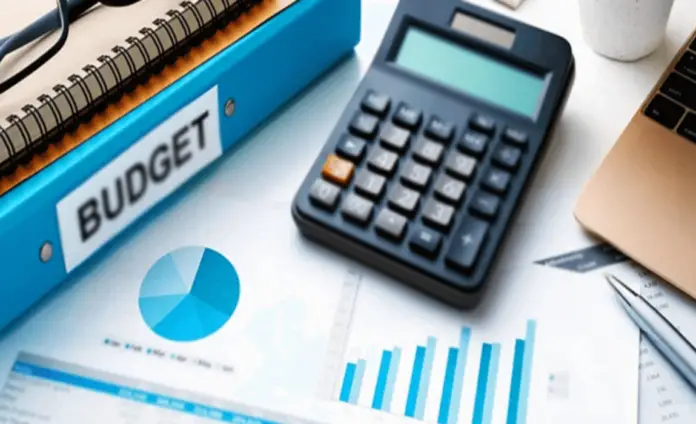Federal Minister for Finance and Revenue Miftah Ismail has presented the first federal budget 2022-2023 of the Pakistan Muslim League-N-led coalition government at centre. A general overview of this budget in comparison with the revised estimates of the budget 2021-2022 of previous government can be seen as: According to the budgetary document 2022-2023, the total expenditures of budget 2021-2022 were Rs 10,262,309 million that were increased to Rs 10,623,689 million in the revised estimates – an increase of Rs 361,380 million. In 2022-2023, the total expenditures were increased to Rs 12,421,170 million, or an increase of Rs 1,797,481 million from the last year’s revised estimates of expenditures.
Out of this Rs 12,421,170 million, development expenditures will be Rs 1,023,867 million in 2022-2023 that are Rs 590,203 million more than what was spent in 2022-2023 revised budget of Rs 433,664 million. It is interesting to note that the PTI-led previous government had envisaged Rs 1,137,850 million for development in its budget but spent only Rs 433,664 million in 2021-2022 that was Rs 704,186 million less than what was initially sanctioned for development purposes. Current expenditures in 2022-2023 budget are envisaged at Rs 11,397,303 million, that are Rs 1,207,278 million more than the last year’s revised estimates of Rs 10,190,025 million, which in turn are Rs 1,065,566 million more than was initially envisaged at Rs 9,124,459 million in the budget of 2021-2022.
In essence in 2021-2022 budget, the development expenditures were decreased by a little more than Rs 0.7 billion, while the current expenditures were increased by almost Rs 1.07 billion. Total revenue receipts for 2022-2023 is envisaged at Rs 7.0 billion, that are Rs Rs. 1.0 billion more than revenue receipts of revised budget of Rs 6.0 billion in revised budget 2021-2022. Out of Rs 7.0 billion, Rs 2.57 billion are envisaged as direct taxes that mostly include income tax, which would be Rs 3.67 billion more than the last years revised estimates. Another Rs 4.43 billion are envisaged from indirect taxes (sales tax of Rs 3.08 billion, custom duties of Rs 0.95 billion and federal excise of Rs 0.4 billion).
It is interesting to note that revenue from direct taxes will be Rs 1.86 billion less than the revenue from indirect taxes, therefore, it is pertinent to note that the burden of this coalition government is on the general public through indirect taxes and not on the rich through direct taxes as the finance minister has claimed in his budget speech. Almost Rs 2 billion more indirect taxes than the direct taxes would impact negatively on the consumer demand that is going to decrease substantially, because indirect taxes are regressive in nature and hit the poor more heavily than on the rich. These indirect taxes will also slow down the investment in the country, because profit margins of producers and sellers would diminish and cost of doing would subsequently go up, slowing production process further.
In comparison, the PTI-led government in its 2021-2022 budget had envisaged Rs 2.18 billion from direct taxes and had collected Rs 2.2 billion in its revised estimates (Rs 0.02 billion more than initial estimates). They had envisaged Rs 3.65 billion in the 2021-2022 budget and had collected almost Rs 3.8 billion in the revised estimates of the same year (Rs 0.15 billion more than what was initially envisaged). Out of Rs 11.4 billion in budget of 2022-2023 and Rs 10.2 billion in revised budget of 2021-2022 for current expenditures, distribution to ministries is as under: general public services would have Rs 6.3 billion in 2022-2023 budget that is 55.3% of the current expenditure. In 2021-2022 revised budget, the general public services received almost Rs 5.6 billion, or 55.0% of the current expenditure.
Out of Rs 6.3 billion in 2022-2023, almost 4.0 billion (35% of current expenditure) will go for debt servicing – almost Rs 3.5 billion to service domestic debt and Rs 0.5 billion to service foreign debt. More than Rs 1.0 billion are envisaged as transfers under different heads, Rs 0.53 billion (4.6% of current expenditures) for pensions, and the rest Rs 0.77 billion (6.75% of current expenditure) for administration and general services etc. Defense will receive Rs 1.53 billion (13.42% of the current expenditure) in 2022-2023 budget. In 2021-2022 budget, defense received Rs 1.48 billion (14.5% of the revised current expenditures). Education would get Rs 0.09 billion (0.8%) in 2022-2023 budget, when this head received Rs 0.09 (0.88%) in 2021-2022 revised budget.
The social protection will receive Rs 0.37 billion (3.2%) in 2022-2023 budget when this head received Rs 0.36 billion (3.5%) in 2021-2022 revised budget. The public order and safety would get almost Rs 0.2 billion (1.75% of the current expenditure) in this budget. The public order and safety got almost Rs 0.19 billion (1.86% of the revised current expenditures) in 2021-2022 budget. Health would get Rs 0.2 billion (1.7%) in 2022-2023 budget, when heath received Rs 0.45 billion (4.4%) in revised 2021-2022 budget. The economic affairs will get Rs 0.14 billion (1.2% from the current accounts), when this head received Rs 0.45 billion (4.4%) in 2021-2022 revised budget. Recreation, religion and culture will get Rs 10,990 million in 2022-2023 when this head received Rs 12,380 million in revised 2021-2022 budget.
Housing and community amenities will get Rs 7,850 million (0.07%) of the current expenditures when this head received Rs 5,463 million in 2021-2022 revised budget. Environment protection would get Rs 750 million from the current accounts when this head received only Rs 452 million in 2021-2022 revised budget. The general public services and defense together are a total of 68.4% of the current expenditures and the rest miniseries – social protection, public order and safety, health, economic affairs, education, recreation, religion and culture, housing and community amenities and environment would get a total of 31.6% of the 2022-2023 budget. Ministry of Environment as in the past has received less than a million rupees for pollution control and mitigating the environment. It is noted that the Ministry of Climate Change has not been mentioned in this or the previous budget allocations and documents.
In summary, apart from 68.4% on debt servicing and defense, Pakistan government in the current expenditures of the federal budget 2022-2023 would spend 3.2% on social protection, 0.8% on education, 0.2% on public order and safety, 0.2% on health, 0.14% on economic affairs, and a few million on recreation, religion and culture, housing and communities and very little on the environment. A comparison with last year’s budget shows that the present government has increased expenditures on general public servicing (debt servicing) from Rs 5.6 billion to Rs 6.3 billion. On defense from Rs 1.48 bullion to Rs 1.53 billion; on public order and safety from Rs 191.5 million to 208.8 million; and housing from Rs 5.5 million to 7.85 million. Kept almost constant the spending on education at Rs 90.6 million; social protection at Rs 370 million, but reduced expenditures on health drastically from Rs 155.0 million to Rs 1.6 million and on economic affairs from Rs 0.45 billion to Rs 19.6 million.







